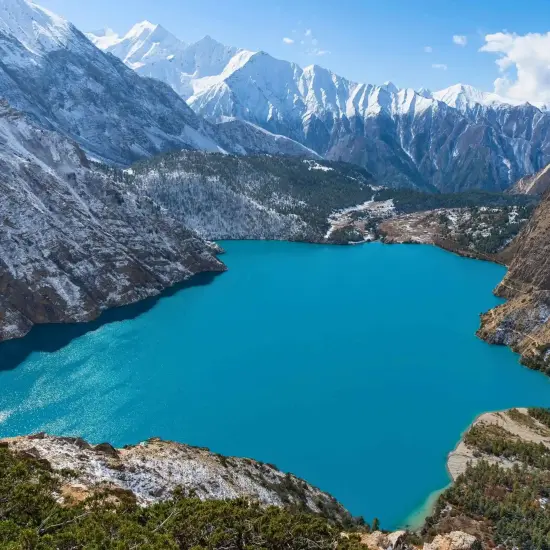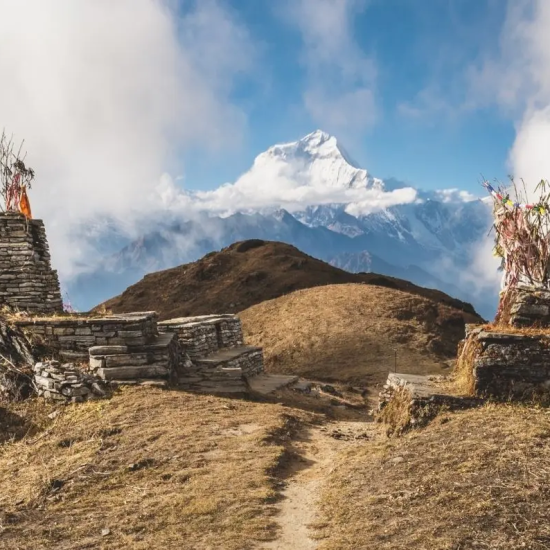What is the Food Like?
Foods in Kathmandu
While you're in Kathmandu at the beginning and end of your trip, you'll enjoy daily breakfast at your hotel. This is typically served buffet-style and includes a variety of local and international options such as eggs, breads, cereals, fruits, and beverages. These hearty breakfasts are perfect for fueling up before your mountain journey or relaxing after your trek.
Foods During the Trek
During your trek to and from Mera Peak, we provide breakfast each day at the teahouses where you stay. You’ll select your breakfast from the local menu the evening before—popular choices include porridge, Tibetan bread, eggs, pancakes, and tea or coffee. Lunch and dinner during the trek are not included in the package. This gives you the freedom to choose meals from the diverse menus available at local teahouses, allowing you to enjoy dishes such as dal bhat (rice, lentil soup, and vegetables), noodles, momos, fried rice, soups, and more. It’s a great opportunity to explore Nepali and regional Himalayan cuisine.
Foods During the Summit Period
As you approach the final and most demanding section of your climb, we make sure you're well-nourished. At Mera High Camp on Day 11, all meals—breakfast, lunch, and dinner—are included and freshly prepared by our experienced staff in the campsite kitchen. This ensures you’re fully fueled and rested for the summit push. On summit day (Day 12), we also provide breakfast and a packed lunch, made at the camp and designed for high-energy performance. These meals are specially prepared to give you the necessary strength and stamina for your ascent to the summit and the return to Khare.
Throughout your Mera Peak journey, your guide will ensure you have access to clean, nourishing food options that support your health, energy, and enjoyment on the trail.
What is the Accommodation Like?
In Kathmandu:
Your Mera Peak trip starts and ends in the heart of Thamel, Kathmandu’s vibrant traveler district. You’ll stay in a comfortable hotel featuring:
- Twin-share en-suite rooms
- Air conditioning
- Wi-Fi
- Proximity to shops, cafés, and cultural sites
Room Upgrades: Want privacy? Ask about upgrading to a private room for your two nights in Kathmandu.
In Ramechhap (or Kathmandu – Depending on Season):
Your second night depends on flight operations to Lukla:
- Peak Season (Spring & Autumn): Flights depart from Ramechhap, so we provide simple twin-share guesthouse accommodation en route. These guesthouses may offer private or shared bathrooms.
- Off-Season (Winter & Monsoon): If flights operate directly from Kathmandu, you’ll stay an extra night in the capital, giving you more time to explore without the road transfer.
On the Trek:
For 13 nights, you'll stay in local teahouses, a vital and memorable part of Himalayan trekking life:
Lower Elevations (Chutanga, Kothe, Lukla):
Teahouses here often resemble cozy mountain lodges. Rooms usually have twin beds with clean bedding. Shared bathrooms are common. Some lodges offer basic Wi-Fi and hot showers (for a fee).
Higher Elevations (Thuli Kharka, Thaknak, Khare):
Lodges become simpler as you gain altitude. Expect thinner walls, basic furnishings, and limited or no hot water. Toilets may be squat-style and shared.
At Mera Peak High Camp:
On Day 11, you’ll switch from teahouses to camping under the Himalayan stars:
- Four-season expedition tents provided by Places Nepal
- All camping gear and kitchen supplies included
- Surrounded by awe-inspiring views of Mera Peak and neighboring giants
For extra comfort, we recommend bringing a light inflatable pillow or personal sleeping mat, though we supply all essentials.

















-webp.webp) Trek Permit Required
Trek Permit Required 



























































